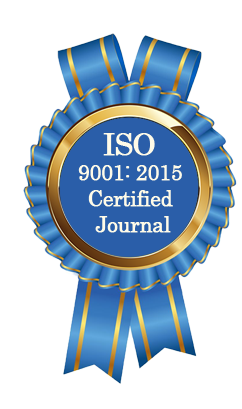| All | Since 2020 | |
| Citation | 105 | 60 |
| h-index | 4 | 4 |
| i10-index | 3 | 2 |
WJAHR Citation 
Login
News & Updation
Best Article Awards
World Journal of Advance Healthcare Research (WJAHR) is giving Best Article Award in every Issue for Best Article and Issue Certificate of Appreciation to the Authors to promote research activity of scholar.
Best Article of current issue
Download Article : Click here
Indexing
Abstract
RISKS OF TYPE 2 DIABETES AMONG NONDIABETIC PATIENTS
*Krishna Kumari Paudel (Subedi), Prakriti Shrestha, Sushila Pokharel, Gita Thapaliya and Elisha Shrestha
ABSTRACT
Introduction: The prevalence of type 2 diabetes has been rising worldwide, including in low- and middle-income countries such as Nepal. Early detection of individuals at risk is of the utmost importance to prevent the escalating condition. This study used the Indian Diabetes Risk Score (IDRS) in order to assess the risks of developing diabetes among undiagnosed diabetes patients attending OPD and Emergency units due to other problems in Manmohan Medical College and Teaching Hospital of Nepal. Objective: The objective of this study was to assess the risk of developing diabetes among undiagnosed patients in Manmohan Medical College and Teaching Hospital Sowyambhu, 15 Kathmandu Nepal. Methods: A hospital-based cross-sectional descriptive study was conducted among 385 adult undiagnosed diabetic patients attending OPD and Emergency due to other health problems in Manmohan Medical College and Teaching Hospital sowyambhu Kathmandu Nepal. Simple random sampling was utilized to select participants. The data collection tool consisted of two parts; first, socio-demographic information was collected and second, the Indian Diabetes Risk Score was used to measure the risks. Pearson’s Chi-square was used to see the associations. Result: The majority (61.3%) of participants were female, and only 38.7% were female. In regard to marital status the majority of participants (74.8%) were married, followed by 25.2% were unmarried. In terms of employment status, both employed and unemployed nearly had similar eminence (48.1% and 51.9% respectively). Likewise, 61% were non-alcoholic, 36.9% were occasional alcohol users, and 1.6% used alcohol on a regular basis. About half of the participants (50%)) had a moderate risk of developing type 2 diabetes. Similarly, 31% had severe risk and 19% had a low risk of developing diabetes. Diabetes risk is significantly associated with marital status, employment status, and alcohol consumption (p= 0.000, 0.040, and 0.41respectively). Conversely, diabetes risk was not associated with gender (p=1.111). Conclusion: According to this study, there were about 50% of participants had a moderate level of risk, and about one-third had a high level of risk of developing diabetes. This denotes that many undiagnosed people are likely to develop diabetes in the future. It is important to understand that this study has alerted us that such threats can only be dealt with by focusing on preventive measures.
[Full Text Article] [Download Certificate]
